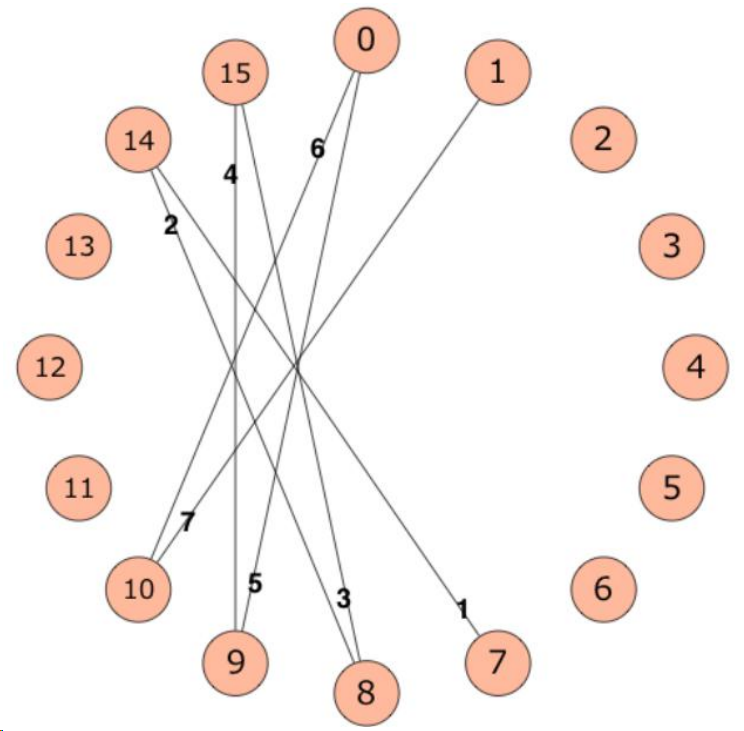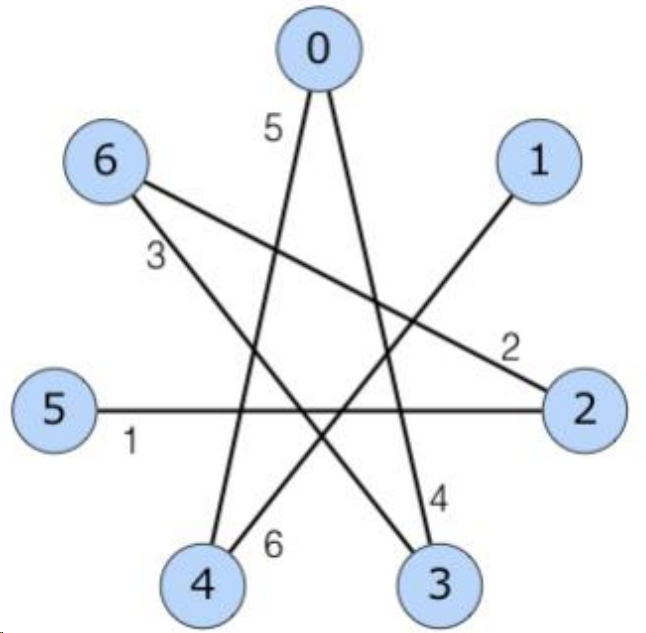题解:GKK 的游戏
题目
题目描述
GKK 是一个喜欢环上游戏的男孩。
现在有一张 \(n\) 个点组成的图,每个点的编号为 \(0\sim n-1\)。你有 \(m\) 次操作,每一次操作有三个参数 \(a,b,c\)。操作的意义如下:
- 在编号为 \(a+0,b+0\) 的点之间连一条边权为 \(c+0\) 的边。
- 在编号为 \(b+0,a+1\) 的点之间连一条边权为 \(c+1\) 的边。
- 在编号为 \(a+1,b+1\) 的点之间连一条边权为 \(c+2\) 的边。
- 在编号为 \(b+1,a+2\) 的点之间连一条边权为 \(c+3\) 的边。
- 在编号为 \(a+2,b+2\) 的点之间连一条边权为 \(c+4\) 的边。
- 在编号为 \(b+2,a+3\) 的点之间连一条边权为 \(c+5\) 的边。
- ……
其中,点的编号都是模 \(n\) 意义下的,即 \(n\) 号点与 \(0\) 号点等价,\(2n-1\) 号点与 \(n-1\) 号点等价。
为了方便理解,下图为 \(n=16,a=17,b=14,c=7\) 时首先加入的 \(7\) 条边。

GKK 想知道,在所有操作进行完毕之后,图的最小生成树的各边权值之和。他把这个问题抛给了你。
最小生成树的定义:从 \(n\) 个点的图中选出 \(n-1\) 条边,使图联通且所选边的权值和最小。
输入格式
第一行两个正整数 \(n,m\) 表示点数和操作数。
接下来 \(m\) 行,每行三个非负整数 \(a,b,c\) 表示一次操作。
输出格式
一行一个整数表示答案。
输入输出样例
输入样例 #1
7 1
5 2 1
输出样例 #1
21
输入样例 #2
2 1
0 0 1000000000
输出样例 #2
1000000001
输入样例 #3
5 3
0 1 10
0 2 10
0 4 10
输出样例 #3
42
说明/提示
样例解释 #1
最小生成树如图,答案为 \(1+2+3+4+5+6=21\)。

数据范围
对于 \(100\%\) 的数据,满足 \(2\leq n\leq 2\times 10^5,1\leq m\leq2\times10^5\)。
提示
- 可能存在重边或自环。
- 边权也许可以构成一个等差数列,公差为 \(2\)。
题解
题意分析
求最小生成树,考虑 Kruskal 算法。
但是边的数量会达到 \(\mathcal O\left(n^2\right)\) 的量级,直接 Kruskal 会 \(\text{TLE}\)。
对于每一次操作,其会连边:
以及:
因此我们可以仅在操作时连边 \((a,b),(a+1,b)\),然后在 Kruskal 的过程中一边操作一边连边。
对于边 \((u,v)=w\),其下一条边就是 \((u+1,v+1)=w+2\)。
这样做并不会影响正确性,因为边 \((u+1,v+1)=w+2\) 在原本的 Kruskal 算法中本来就是后于 \((u,v)=w\) 查询的。
而也仅仅当边 \((u,v)=w\) 被加入最小生成树中时,我们需要连 \((u+1,v+1)=w+2\)。
如何证明 \((u,v)=w\) 不在生成树中时,\((u+1,v+1)=w+2\) 不需要连呢?
考虑 Kruskal 算法求最小生成树的过程,此时即 \(u,v\) 已经在一个连通块中,则 \(u,v\) 已经连通。
一定存在边 \((u+1,v)=w+1\),较 \((u+1,v+1)\) 更优。
AC 代码
//#include<bits/stdc++.h>
#include<algorithm>
#include<iostream>
#include<cstring>
#include<iomanip>
#include<cstdio>
#include<string>
#include<vector>
#include<cmath>
#include<ctime>
#include<deque>
#include<queue>
#include<stack>
#include<list>
using namespace std;
typedef long long ll;
constexpr const int N=2e5,M=2e5;
int n;
struct edge{
int u,v;
ll w;
};
bool operator >(edge a,edge b){
return a.w>b.w;
}
priority_queue<edge,vector<edge>,greater<edge>>q;
int f[N+1];
int find(int x){
if(f[x]!=x){
return f[x]=find(f[x]);
}
return x;
}
void merge(int x,int y){
f[find(x)]=find(y);
}
ll Kruskal(){
for(int i=1;i<=n;i++){
f[i]=i;
}
ll ans=0;
while(q.size()){
auto p=q.top();q.pop();
if(find(p.u)!=find(p.v)){
ans+=p.w;
merge(p.u,p.v);
q.push({(p.u+1)%n,(p.v+1)%n,p.w+2});
}
}
return ans;
}
int main(){
/*freopen("test.in","r",stdin);
freopen("test.out","w",stdout);*/
ios::sync_with_stdio(false);
cin.tie(0);cout.tie(0);
int m;
cin>>n>>m;
while(m--){
int a,b;
ll c;
cin>>a>>b>>c;
a%=n;b%=n;
q.push({a,b,c});
q.push({(a+1)%n,b,c+1});
}
cout<<Kruskal()<<'\n';
cout.flush();
/*fclose(stdin);
fclose(stdout);*/
return 0;
}


 浙公网安备 33010602011771号
浙公网安备 33010602011771号